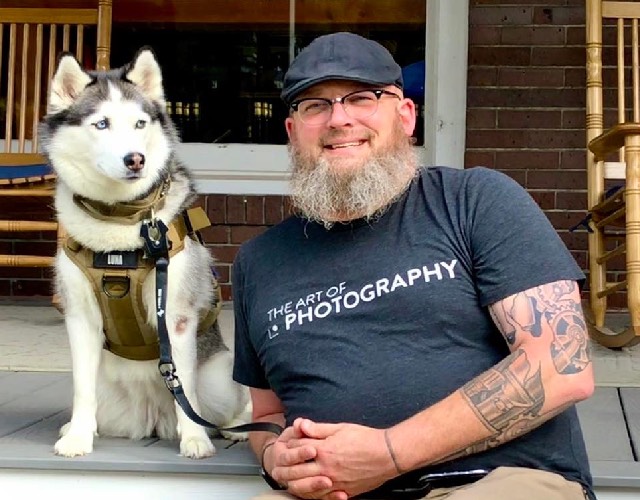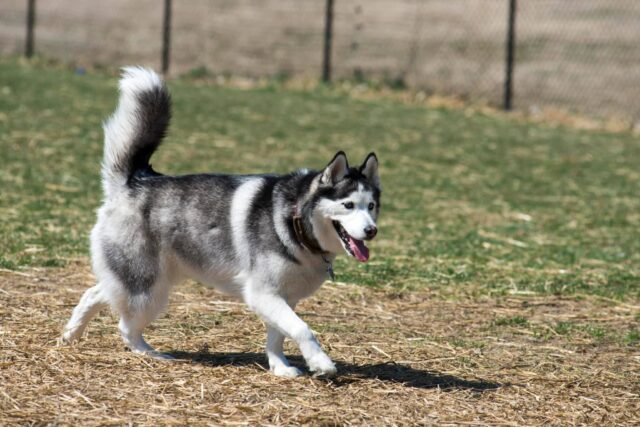When you think of a service dog, it’s most likely a Lab or Golden Retriever that wags its tail across your mind. They’re the breeds you see most often assisting others because their temperaments lend well to helping people. High energy breeds like Huskies don’t often make the cut. But as we dog-lovers know, every individual pup is different.
That’s why Luna, the three-and-a-half-year-old purebred Husky, can be such a successful PTSD service dog! This isn’t something that requires a specific breed but a close bond and time spent together in training. Being a successful service dog all boils down to how well the dog knows their human, and Luna is completely tuned-in to her best friend.

After serving in the military for 19 years, Shawn found himself suffering from symptoms of PTSD, so he started searching for a companion to train. Then, at only five weeks old, Luna the Husky chose him to be her new dog dad.
“She picked me at the breeders, there was no denying that. She picked me at 5 weeks old; 8 weeks old I was able to bring her home, and 9 weeks old I had a little ‘in training’ vest for her and had her out with me everywhere right from go,” shared Shawn.
Related Post: Chloe The Service Dog Helps Marine Corps Veteran Cope With PTSD

Shawn knew that he wanted Luna to be his service dog as soon as he saw her. But because of Huskies’ well-known high energy and propensity to chase, there weren’t many people who had faith that Luna would make a great PTSD service pup.
Someone even said they would be happy to train Luna, but they would fail her because she was a Husky, and “there was no way a Husky would pass as a service dog.”

But that didn’t stop Shawn from pursuing his plan of getting Luna trained and certified. He looked into the rules and regulations of self-training, and together they went to work. For socialization, he visited Walmart multiple times per day, and introduced her to as many children as possible.
Then he pursued certifications like the American Kennel Club’s S.T.A.R. Puppy, and a Canine Good Citizen certification, which the AKC recognizes as the gold standard for doggie behavior.

Luna passed with flying colors and even figured out how to tell Shawn to take his medicine.
“Right after I took my medicine she jumped up on the hospital recliner with me and kind of pushed me back and once I was reclined, she put her muzzle down right on my chest, and boom, I was out. That’s the last I remembered,” he said.

The impact that a service dog can make in the life of a veteran with PTSD can mean the difference between life and death. In fact, the suicide statistics for veterans are startlingly high. But service dogs offer veterans a sense of safety. They help ease anxiety, and other PTSD symptoms, along with providing a sense of security knowing that someone has got their back. Plus, they’re excellent listers and snugglers.
We are hardest to love when we need it the most, and who is better at giving unconditional love than our furry best friends?
Featured Image: Facebook
 Toledo, United States.
Toledo, United States.